TISA signed a collaboration agreement with five organisations to strengthen the cooperation on the standardised delivery of Safety Related Traffic Information (SRTI) in Europe.
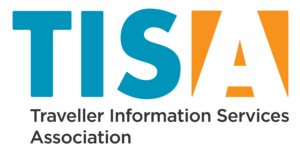 |
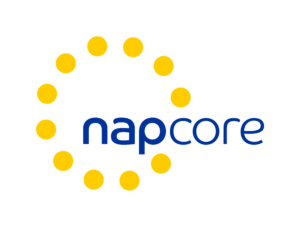 |
|
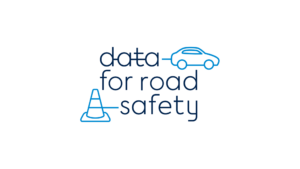 |
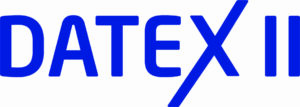 |
 |
Six European and International organisations in the mobility domain team up to further strengthen cooperation
on the standardised delivery of safety-related traffic information in Europe.
- The new agreement between TISA, DATEX II, CAR 2 CAR Communication Consortium, Data for Road Safety ecosystem, NAPCORE and C-Roads will lead to improved harmonisation of Message Sets for Safety Related Traffic Information (SRTI), addressing the Delegated Regulation 886/2013 and paving the way for increased safety on European roads.
- The agreement ensures the continuation of an activity initially launched in 2013 between TISA and DATEX II, which has successfully expanded to include cooperation with NAPCORE, CAR 2 CAR Communication Consortium, Data for Road Safety ecosystem and C-Roads.
- The document provides recommendations on how to properly apply the standards mentioned below for providing data and services on the eight SRTI event categories, as defined by the Delegated Regulation 886/2013, through as many delivery channels as possible
Brussels, 04.04.2024 – Traveller Information Services Association (TISA), a membership association with worldwide scope on proactive implementation of traffic and travel information services and products has entered into a collaboration agreement with NAPCORE, DATEX II, CAR 2 CAR Communication Consortium, Data for Road Safety ecosystem and C-Roads.
An initial agreement from 2013 resulted in the first proposal for harmonised message sets in TPEG2 (ISO IS/TS 21219), TMC (ISO EN 14819-2) and DATEX II (CET/TS 16157) format, responding to the EU Delegated Regulation 886/2013 (Priority Action c of the European ITS Directive 2020/40/EU). Over the years, as more technologies and standardised delivery channels can distribute SRTI content to users, more organisations have joined the work. This includes the CAR 2 CAR Communication Consortium, providing message sets in the DENM (ETSI EN 302 637-3) format, as well as Data for Road Safety ecosystem, supporting SRTI data sharing from vehicles and mobile apps in Europe. The recent additions of NAPCORE and C-Roads further strengthens and expands the collaboration.
The new collaboration agreement establishes a governance structure to ensure efficient partnership between the undersigning entities with the goal to ensure:
- continuous work progress on the recommendations for interoperability and harmonization between standards;
- confirm commitment of the participating organisations towards shared goals;
- provide regular publication of work updates of the different organisations.
Statement from TISA:
‘More and more ITS standards can now support the delivery of SRTI messages to drivers across Europe in various channels. This collaboration agreement will help move everyone forward in a consistent and harmonized pace’ says TISA Chairwoman Stephanie Leonard (TomTom).
Statement from NAPCORE
“This is a win for road safety in Europe! Joining forces of some of the most relevant organisations in the standardisation, provision and exchange of mobility data in Europe on the important domain of road safety related data will enable the continued, sustainable evolvement of services warning drivers of hazardous road conditions” says Timo Hoffmann, General Secretary of NAPCORE.
Statement from DATEX II
“Ensuring road and traffic safety is a fundamental responsibility for road operators. However, road safety is affected by numerous external and uncontrollable events. These incidents necessitate collective efforts from everyone on the road to detect, share information, and provide warnings. To road operators this collaboration underscores the commitment of all stakeholders in the ITS domain to contribute. Together we aim to fully harness the potential of ITS to enhance road safety and, in doing so, save lives without hesitation. This way we materialize our joint responsibility to create safer roads for travellers and those working on and along our roads. DATEX II, as a formal reference, is unwavering in its dedication to enabling seamless digital services that facilitate cross-platform data exchange, free from semantical and technical barriers.” Bard de Vries, Chair of the European DATEX II Community.
Statement from CAR 2 CAR Communication Consortium
“Today those that make C-ITS happen, from standards, road operators, data exchange to automotive have gathered together to drive road safety in Europe further towards ‘Vision Zero’. This will further increase Europe’s global lead in Road Safety and C-ITS. This cross-sector cooperation is another important step towards our vision – Increasing road safety and traffic efficiency toward the Vision Zero (zero accidents), while reducing the environmental footprint – says Niels Peter Skov Andersen, General Manager, CAR 2 CAR Communication Consortium.
Statement from Data for Road Safety ecosystem (DFRS)
“This new cooperation enables a holistic and multifaceted way of sharing data for road safety purposes. Vehicle manufacturers, suppliers, service providers, road authorities and other public authorities work hand in hand to make our European roads safer, emphasizes Joost Vantomme, Chair of DFRS and CEO of ERTICO-ITS Europe”
Statement from C-Roads
“This collaboration agreement will support all stakeholders in making safety related traffic data accessible via standardised interfaces to be integrated in traditional ITS as well as in emerging C-ITS services. At the end, travellers will be warned about safety issues on their trip via different communication channels in parallel, which raises the awareness of safety critical traffic situations and increases road safety all across Europe” states Martin Böhm, Secretary General of the C-Roads Platform.
The signature of the agreement marks a significant milestone in delivering on the goals of the European Union’s ‚Vision Zero‘ by providing safety related traffic information through as many delivery channels as possible. While road accident fatalities have decreased in the past 10 years, this cooperation on SRTI standards harmonization aims to contribute to further increasing road safety and reducing accidents on European roads.
About Traveller Information Services Association (TISA)
TISA is an international association that leads the development of trusted traffic & travel standards and harmonized services for our members to ensure that travel is safe, efficient, and sustainable for everyone, everywhere. Our vision is a world where traffic and travel information is 100% correct, 100% of the time on all roads. Our members include vehicle manufacturers, navigation service providers, solution providers, user device manufacturers and public sector stakeholders.
It is focused on proactive implementation of traffic and travel information services and products based on existing standards, including primarily RDS-TMC and TPEG technologies. TISA supports the maintenance and development of standardised technologies leading to economic implementation and rapid market acceptance across a wide range of travel information services and products. TISA was established in December 2007 as a non-profit organisation under the Belgian law, taking over the activities from the former TMC forum, the TPEG forum and the German Mobile.Info project.
About NAPCORE
NAPCORE (National Access Point Coordination Organisation for Europe) is an organisation to coordinate and harmonise more than 30 mobility data platforms across Europe. It has become apparent, that the existing National Access Points are quite different in their setup and data access interfaces. Also, the data formats and standards used differ throughout Europe. To work on better alignment, the National Access Point Coordination Organisation for Europe (NAPCORE) project was started. NAPCORE is co-financed by a Programme Support Action under the European Commission’s Connecting Europe Facility. NAPCORE has been launched as a coordination mechanism to improve interoperability of the National Access Points as a backbone of European mobility data exchange. NAPCORE improves the interoperability of mobility data in Europe with mobility data standard harmonisation and alignment. Also, NAPCORE increases access and expands availability to mobility related data by coordinated data access and better harmonisation of the European NAPs. Furthermore, NAPCORE empowers NAPs and National Bodies by defining and implementing common procedures and strategies, strengthening the position and the role of NAPs, supporting steps towards the creation of pan-European solutions to better facilitate the use of EU-wide data.
About DATEX II
DATEX II is the electronic language used in Europe for the exchange of traffic information and traffic data. The development of DATEX II was initiated in the early 90s because of the need to exchange information between traffic centres of motorway operators. Soon there was the need to open this information to service providers. DATEX 1 was somewhat too limited for this and used outdated technical concepts. Which is why DATEX II was developed in the early years of this millennium. By means of DATEX II, traffic information and traffic management information is distributed in a way that is not dependent on language and presentation format. This means that there is no room for misunderstandings and / or translation errors by the recipient, but the recipient can choose to include spoken text, an image on a map, or to integrate it in a navigation calculation. The increasing scale on which ITS services are being dimensioned, as well as the new digitization requirements arising from self-driving cars, requires increased use of standards and thus also challenges the DATEX II community accordingly.
About Data For Road Safety ecosystem (DFRS)
The mission of the DFRS ecosystem is to improve road safety by maximizing the reach of safety-related traffic information powered by safety data generated by vehicles and road infrastructure operators. Alerts generated by vehicles, along with infrastructure data, are shared using a decentralised data collaboration architecture. DFRS is chaired by ERTICO-ITS Europe and members consist of public authorities/road operators, vehicle manufacturers, automotive suppliers and service providers, complemented by associations and organisations active in these segments.
The ecosystem is the institutional follow-up from the Data Task Force established by European transport ministers alongside the European Commission and the private sector. A multi-party contractual framework is in force for the exchange of safety related traffic information (SRTI) among the participants, and to create the SRTI events mentioned in the delegated Regulation 886/2013.
About CAR 2 CAR Communication Consortium (C2C-CC)
The CAR 2 CAR Communication Consortium (C2C-CC) aims at assisting towards accident free traffic (vision zero) at the earliest possible date. It further aims at supporting the highest safety level at improved traffic efficiency anywhere, anytime at the lowest cost to the end user and the environment. While working on solutions supporting all driving levels from manual to fully automated it considers specific needs of stakeholders, types of vehicles and users. The C2C-CC contributes to the development and specification of robust and reliable solutions that allow for a continuous and seamless evolution of required functionalities. It enables technologies driven by innovation and competition, thereby fostering concepts of cooperation between the road users and with the road infrastructure. This is based on sharing information, awareness, perception and intentions while focusing on tactical level and considering strategic and planning level as required.
About C-Roads
The C-Roads Platform is a joint initiative of European Member States and road operators deploying C-ITS services all across Europe in order to significantly improve the exchange of information between vehicles and road infrastructure. The C-Roads Platform currently unites 18 European Member States’ driven pilots and deployment initiatives on C-ITS services working jointly on the strategic and coordinated implementation. In order to achieve their aims, different scenarios are cross-site tested and implemented in the course of national technical pilots to achieve transnational interoperability. In this way, C-Roads contributes to European cohesion of C-ITS deployment in the European Union regarding a long-term rollout.
C-Roads forms the basis for harmonised C-ITS deployment and roll-out in Europe, based on common communication profiles. With the intent to ensure the desired spillover effect, from the achievements and lessons learned between the automotive industry and road operators, these communication profile specifications are made accessible to third parties.
Press contact:
TISA: Stéphanie Chaufton. s.chaufton@tisa.org
NAPCORE: Sabrina Caiani. sabrina.caiani@sina.it
DATEX-II: Bard de Vries. bard.de.vries@ndw.nu
DFRS: Julia Rodriguez Rayego. j.rayego@mail.ertico.com
C2C-CC: Niels Peter Skov Andersen. npa@anemonetechnology.com
C-Roads: Nicole Bartl. nicole.bartl@austriatech.at
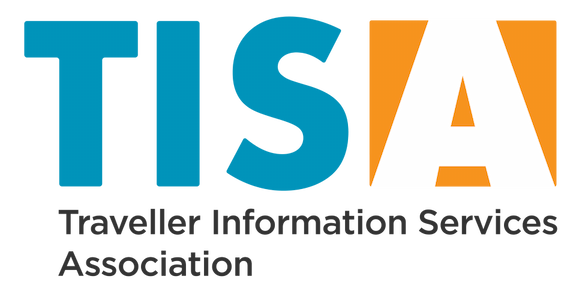
 LinkedIn
LinkedIn